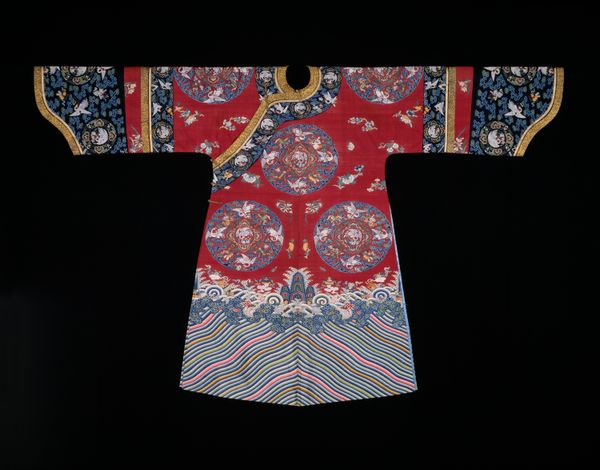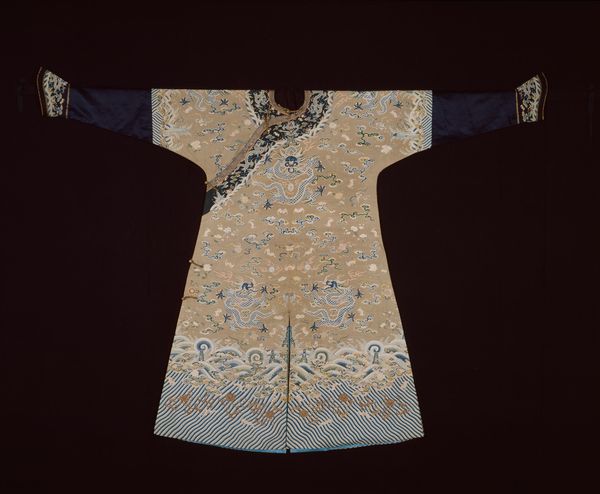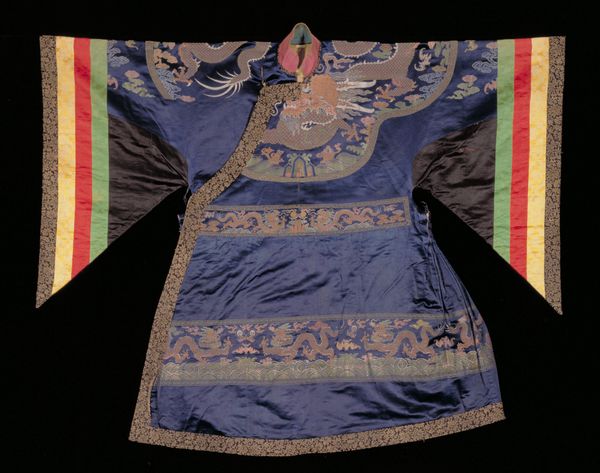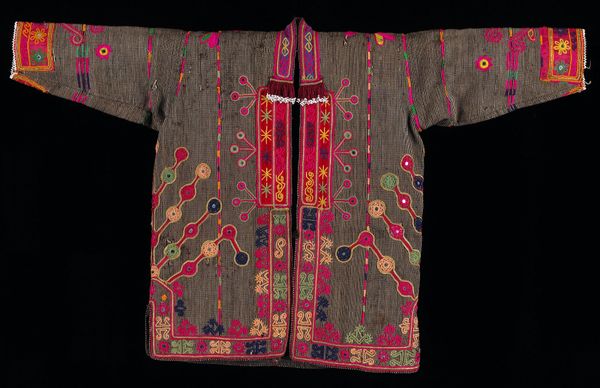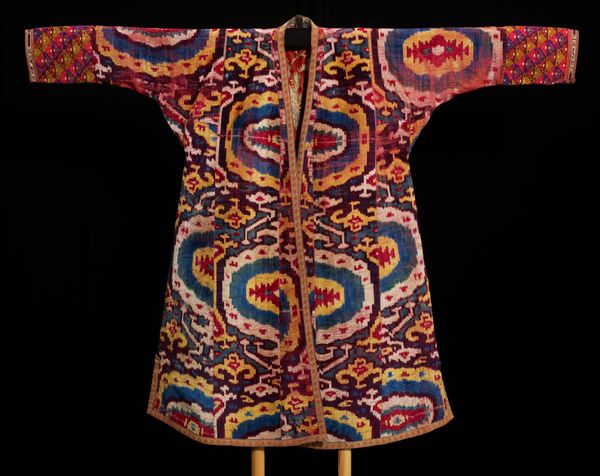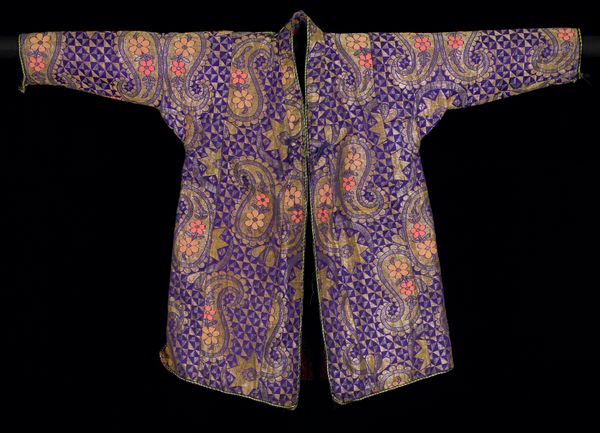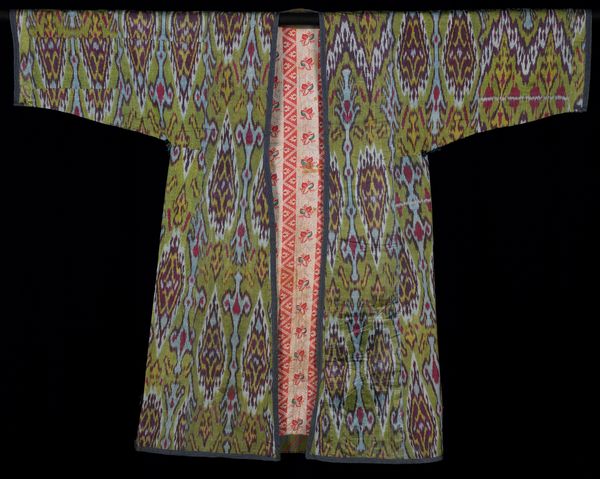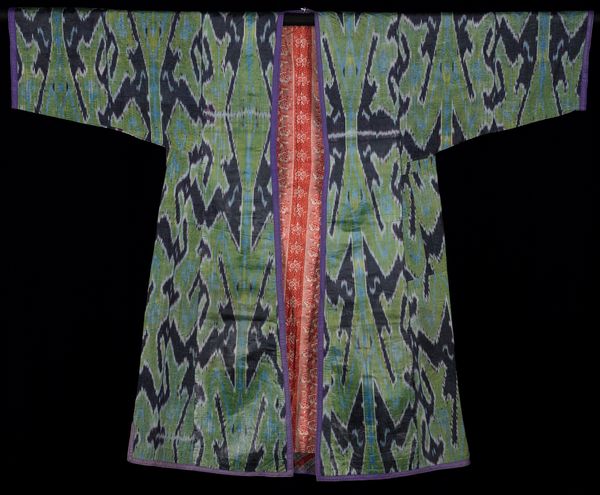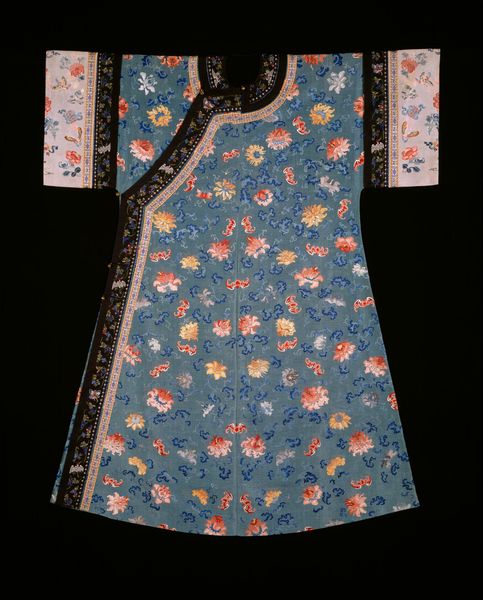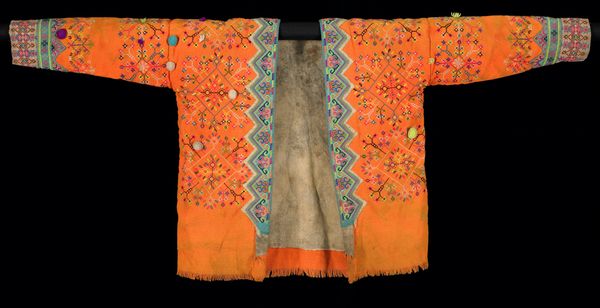
weaving, textile
#
pattern heavy
#
asian-art
#
weaving
#
textile
#
orientalism
#
abstraction
#
costume
#
china
#
islamic-art
#
decorative-art
Dimensions: 146.3 × 195.2 cm (57 5/8 × 76 3/4 in.)
Copyright: Public Domain
Curator: The object before us is an Empress' Jifu, or Semiformal Court Robe. It's currently housed here at The Art Institute of Chicago, and while its exact date of creation is unknown, it is thought to come from sometime during the Qing Dynasty, spanning from 1644 to 1911. Editor: My first thought is: what a statement! It's dazzling. That field of golden yellow, sprinkled with auspicious symbols...It feels so full of life and ambition, you know? Like wearing pure power. Curator: Indeed. As a garment, the Jifu represented more than just personal style; it was deeply entwined with Qing Dynasty court rituals and the articulation of imperial power. Yellow, particularly, was reserved for the emperor and empress, associating them with the earth and its bounty, while also positioning them as the embodiment of cosmic order. Editor: The dragons really jump out! But I also notice the meticulous waves at the bottom, and those geometric patterns woven in the skirts, giving the entire gown a feeling of controlled energy. Almost like a living map of the world with its oceans and mountains. I wonder, how does wearing something so intricate affect the wearer? Does it embolden or constrain? Curator: That is an intriguing question. Consider that the symbols—the dragons, clouds, mountains—were all carefully chosen and positioned, holding symbolic weight, communicating imperial authority, and reflecting the cosmological beliefs underpinning the dynasty's claim to power. These clothes are as much political statement as practical garment. The empress wearing it probably felt acutely aware of her role and status, reinforced visually to everyone in the court and even in portraits that would survive her reign. Editor: Absolutely. And now here we are, centuries later, analyzing and appreciating that story embedded in the textiles. Looking at something like this you feel like a bridge between past and present... It makes you think of all the people who poured their skill and labor into this gown. Curator: It’s also vital to acknowledge the inherent imbalance of power, where the production of such an exquisite garment involved artisans and laborers whose own stories may remain obscured. By interrogating its historical context, we gain insight into the garment as a conduit for understanding power, status, and the socio-political currents of the Qing Dynasty. Editor: You're so right. So next time I need a power suit, I'm going to wear, well, something inspired by this! But until then, I am just grateful to observe. Curator: I completely agree; this robe acts as an invitation to engage with our world critically.
Comments
No comments
Be the first to comment and join the conversation on the ultimate creative platform.

